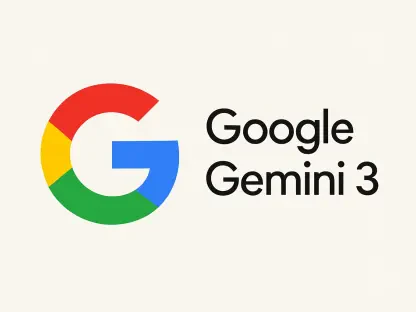Since its introduction as part of a Google Search Labs experiment, Google’s AI Mode has been making waves in the realm of search engine optimization (SEO) and digital marketing. This groundbreaking technology, which leverages genuine artificial intelligence, offers a multitude of changes in how search results are generated and displayed, posing both opportunities and challenges for SEO professionals and digital marketers alike. This article delves into the significant transformations brought about by Google’s AI Mode and examines its implications for the field of digital marketing.
Dynamic Search Results
One of the most significant changes brought about by AI Mode is the variability in search results it generates. AI-generated content can vary considerably in length and detail, ranging from brief summaries to extensive outputs that resemble elaborate blog posts. For instance, a simple search query like “cheap flights” may produce responses between 370 and 449 words, accompanied by citations ranging from 13 to 39. This dynamic nature necessitates that SEO professionals stay agile and adapt their strategies to accommodate diverse content lengths and types, ensuring relevance across various query contexts.
Additionally, the increased presence of local intent in nearly all search queries highlights the importance of localized content. Even queries that seem unrelated to a particular location, such as “online courses” and “YouTube login,” often include location-specific data. This trend emphasizes the need for digital marketers to incorporate geo-specific information into their content to maximize visibility. The geographic context within search results reflects a growing emphasis on user-centric, location-based customization, making localized SEO more pertinent than ever before.
Navigational Queries and Traditional SERPs
Despite the transformational capabilities of AI Mode, traditional search engine results pages (SERPs) continue to play a crucial role, particularly in navigating highly specific queries. Searches for terms such as DuckDuckGo, Gmail, and CNN often bypass AI Mode, reverting to the familiar 8-10 blue link format. This selective use of traditional SERPs for precise navigational queries suggests that traditional SEO practices remain relevant and necessary for certain searches.
AI Mode’s penchant for generating comprehensive content necessitates that content creators prioritize quality and depth. For example, a query such as “causes of the French Revolution” could result in AI-generated outputs exceeding 500 words, complete with multiple citations. This approach indicates that content providing substantial, in-depth information is more likely to be favored by AI Mode. Therefore, marketers should focus on creating valuable content that not only engages readers but also garners the recognition of AI algorithms, enhancing their chances of being highlighted.
Resurfacing Previously Hidden Results
A distinctive feature of AI Mode is its tendency to resurface previously hidden results, offering second-page search results newfound visibility. Queries that do not specifically generate AI outputs revert back to traditional blue links, thereby promoting URLs that were previously buried on page two. This shift in search result prioritization offers SEO professionals an opportunity to optimize underappreciated content, potentially elevating its visibility and traction.
The role of thumbnails in search results further emphasizes the significance of high-quality images. Approximately 85% of citations in AI Mode display thumbnails, putting URLs without visual elements at a disadvantage. Effectively incorporating relevant and optimized images into web pages not only enhances their appearance in search results but also attracts more clicks. The visual appeal of thumbnails can be a critical factor in capturing user attention, underscoring the need for thoughtful image integration in online content strategies.
Local Brand Visibility and Blue Link Records
Local brands stand to benefit significantly from the introduction of AI Mode, particularly in commercial search contexts. For instance, companies like Best Buy excel in localized search outcomes, leveraging their strong local presence. Searches related to mortgage rates frequently cite local references, indicating AI Mode’s prioritization of geographically relevant content. This trend suggests that businesses need to intensify their local SEO efforts, ensuring their content is optimized for location-based searches to capture more localized traffic.
Interestingly, some search queries exhibit an unusually high number of blue links within AI Mode outputs. For instance, the search for “lightweight hiking boots reviews” included up to 21 links. This highlights the substantial opportunities for visibility provided by supporting content that Google’s AI could cite. By producing high-quality, authoritative content, brands can increase their chances of being included in these AI-generated results, thereby boosting their visibility and influence in the search landscape.
The Mobile vs. Desktop Divide
An important observation in the deployment of AI Mode is the notable divide between mobile and desktop platforms. Mobile searches tend to display approximately 50% fewer citations compared to their desktop counterparts, necessitating distinct optimization strategies for different devices. This discrepancy underscores the need for a versatile approach to SEO, one that caters specifically to the unique demands of mobile and desktop users alike. This responsive strategy ensures that web content is effectively optimized for varying screen sizes and user experiences.
Selective citation in response to informational queries is another key aspect of AI Mode’s functionality. Searches for explanations of fundamental concepts or phenomena, such as “why is the sky blue,” often yield very few citations. This selective citation mechanism implies a focus on delivering quality over quantity and suggests that content tailored to answering such questions concisely and accurately could still perform well. SEO strategies should, therefore, concentrate on high-quality content that addresses users’ informational needs effectively.
Citation and User Experience Quirks
Since being introduced as part of a Google Search Labs experiment, Google’s AI Mode has significantly impacted search engine optimization (SEO) and digital marketing. This innovative technology harnesses real artificial intelligence to transform the way search results are generated and presented. For SEO professionals and digital marketers, Google’s AI Mode brings a mix of opportunities and challenges. The potential for change is immense, as it affects how search algorithms function and what content gets prioritized. Digital marketers need to adapt their strategies to stay competitive in this evolving landscape. This article explores the profound changes that Google’s AI Mode introduces and discusses its broader effects on the field of digital marketing. By understanding these changes, professionals can better prepare for and navigate the new dynamics of SEO and digital marketing brought on by AI advancements.









